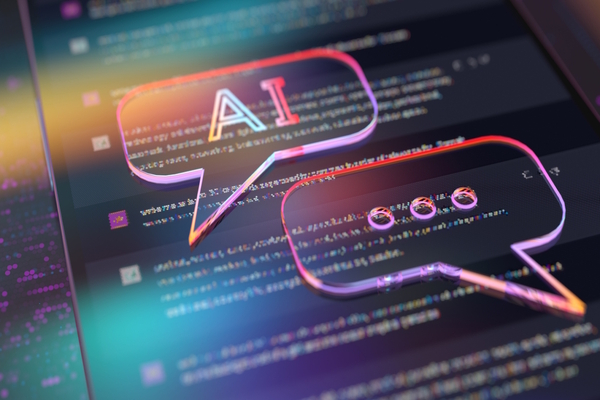Frontline transformation needs more than Gen AI

Mark Williams at WorkJam explains why Agentic AI could be the breakthrough frontline workers have been waiting for
Frontline employees account for 80% of the global workforce, yet many still rely on outdated tools, siloed systems and manual processes to do their work. While digital transformation has reshaped how head office functions operate, frontline teams have been largely overlooked, typically losing more than 20% of their time searching for the information they need.
The result is a growing divide between what modern businesses need from their operations and what their frontline staff are equipped to deliver.
Until now, efforts to address this have focused on incremental improvements such as digital forms, centralised portals or basic automation. But these approaches still depend on the user knowing what to look for and how to take action. What’s missing is intelligence that can operate independently and identify the right tasks, insights or workflows at the right time.
This is where AI has begun to redefine what’s possible, with agentic AI now bridging the gap between insight and action by making decisions and coordinating tasks based on real-time conditions.
To give this some context, much of the current conversation around artificial intelligence focuses on generative tools. These can draft text, summarise documents or retrieve information on demand, but they remain reactive. They require human prompts, offer limited context, and often fail to translate insight into action. For frontline teams, that leaves a familiar gap between knowing what to do and being able to do it.
AI agents have started to close that gap and act as a helpful assistant. For example, instead of simply alerting a store manager to low stock, an AI agent can automatically generate a task to replenish inventory, pre-filled with the relevant product and location details.
The result is a smarter, faster and more autonomous way of working where frontline employees are no longer reliant on managers to chase information or initiate next steps, and where digital tools act more like collaborators than just systems of record.
The state of play
But how far down this road are we? Most organisations are still in transition. In general, they rely on generative AI tools that can draft content or retrieve information; however, these systems still depend on human input and offer a limited ability to take action.
The latest development in the AI world is agentic AI. These agents can work autonomously, making decisions, taking actions and working out alternative solutions if their first try isn’t successful. They are more similar to humans than any AI model so far, so can be truly utilised as an independent worker, not just an assistant.
Where agentic AI begins to add value is by linking systems, anticipating needs and triggering tasks. In this environment, agentic AI may receive a low-stock alert, immediately place an order for new stock, and if the usual product is unavailable, find a suitable alternative. It transforms tasks so that human intervention is rarely required.
The third stage involves a transition to multi-agent ecosystems. These systems have multiple autonomous AI agents who can work together to manage complex operations, such as staffing and logistics. Gartner expects 15% of frontline decisions to be made autonomously through agentic AI by 2028.
For businesses that have moved forward more rapidly, agentic AI is already demonstrating how frontline work can be redefined. Early deployments focus on areas such as automating repetitive tasks, streamlining onboarding and facilitating timely access to information. These are meaningful gains, particularly in environments where every delay or inefficiency has a knock-on effect.
But the potential goes much further. In the near future, staffing plans could adjust automatically based on shift coverage or footfall patterns, and inventory levels could be monitored and replenished in response to live sales data. In addition, training modules could be triggered the moment a skills gap is detected, tailored to the individual and delivered in the flow of work. Suffice it to say, the list of potential agentic AI use cases is growing all the time.
With secure, integrated platforms already in place, organisations have the foundation needed to embed agentic AI into day-to-day operations. The result is not just improved efficiency, but a more empowered and responsive frontline.
Beyond the hype
It’s important to understand that, despite the hype, the case for agentic AI is driven by the realities facing frontline industries. Whether it’s labour shortages that are placing greater strain on existing staff or economic uncertainty that is tightening budgets, many organisations are struggling to keep up with rising service expectations and operational complexity.
These pressures are exposing the limitations of fragmented systems and legacy, reactive workflows, where frontline managers spend too much time chasing information or resolving avoidable issues, and employees are hindered by processes that don’t accurately reflect how work is done in real life. In this environment, small inefficiencies quickly add up and affect performance on a much larger scale.
Agentic AI offers a practical path forward. By embedding intelligence into routine decisions and connecting actions across systems, teams can accomplish more with less. In doing so, businesses can create a more responsive operating model, one where frontline execution improves without relying on constant intervention from above.
With early foundations already in place, the opportunity now is to move from experimentation to impact. Those that act early will be better positioned to adapt, scale and compete.
Mark Williams is Managing Director EMEA at WorkJam
Main image courtesy of iStockPhoto.com and LaylaBird

Business Reporter Team
Related Articles
Most Viewed
Winston House, 3rd Floor, Units 306-309, 2-4 Dollis Park, London, N3 1HF
23-29 Hendon Lane, London, N3 1RT
020 8349 4363
© 2025, Lyonsdown Limited. Business Reporter® is a registered trademark of Lyonsdown Ltd. VAT registration number: 830519543




